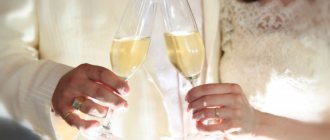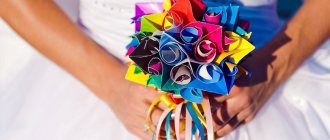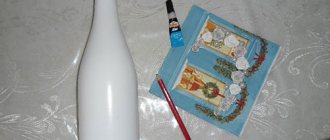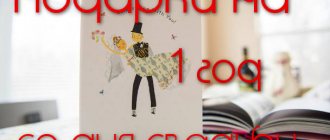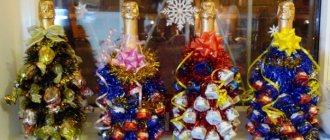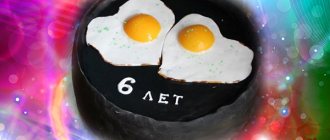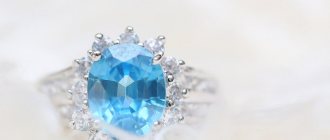The clap of an uncorked bottle of champagne, sparkling wine pouring into crystal glasses - all this has long become an indispensable attribute of any celebration, both in Russia and in many other countries of the world. A light drink with a beautiful golden color looks great on the table surrounded by delicious snacks. A magnificent wedding, New Year's dinner with family, an official banquet or a social reception - champagne is appropriate everywhere, giving the festive event a special charm . Residents of France treat sparkling wine with the same reverence as residents of England treat good tea, considering champagne extremely beneficial for health and mood. As the French say, sparkling wine cures colds and relieves stomach problems. There is a grain of truth in popular beliefs: champagne actually contains tannins and magnesium, which improve immunity and overall tone of the body.
The famous drink was first produced for commercial sale in the first half of the 16th century in Languedoc, one of the southern provinces of France. Champagne took on its modern form thanks to the efforts of many winemakers. The brand of elite champagne "Dom Perignon" is named after the French monk Pierre Perignon, the inventor of blending (mixing the juice of different grape varieties). The widow of winemaker Madame Clicquot, thanks to whom the sparkling drink became crystal clear, founded the world-famous company producing exquisite champagne under the Veuve Clicquot brand.
Since the Middle Ages, champagne has become the favorite drink of the aristocracy , and then of wealthy representatives of the bourgeoisie. Nowadays, having a sip of a sparkling drink, you can not only lift your spirits, but also get in touch with the ancient traditions associated with champagne. In many countries, a bottle of sparkling wine not only decorates the table, but is also used to summon good luck, presented as a gift to winning athletes, and even fulfills wishes. Below we will talk about the most famous traditions, in which the main role, of course, is played by champagne.
"Baptism" of new ships with champagne
As you know, before a new ship is launched, a bottle of champagne is broken on its side. The ancient custom of attracting good luck originates in the beliefs of ancient peoples who wanted to receive the blessing of their gods through sacrifice. The Greeks brought olive wreaths, wine and fruit as gifts to the sea deity, the Turks slaughtered bulls and sheep, and the more cruel inhabitants of the North could sprinkle the keel of a new ship with the blood of an unlucky pirate, a captured enemy or a beautiful slave. In the Middle Ages, before the first voyage, the ship was baptized like a baby, sprinkling with holy water and laying hands on the base of the mast with prayer. In subsequent eras, the tradition underwent significant changes - the religious overtones disappeared, and the “sacrifice” turned into a fun holiday, accompanied by drinking alcohol. Aristocrats and rich merchants threw precious goblets and wine bowls into the sea for good luck.
After a sharp increase in the number of ships launched, caused by the development of navigation and new discoveries, the first voyage of new ships began to be celebrated by simply breaking a bottle of wine on board. From England, the tradition moved to the New World, where containers with a variety of drinks were broken on new ships. During Prohibition, Americans even used glass bottles of cider and water.
In 1890, the new ship was christened for the first time using champagne - a bottle of the drink was spectacularly smashed against the armored iron side of the warship Maine. History has not preserved who chose sparkling wine to follow the tradition. It is known that since then the tradition has taken root in ports around the world, being loved by both the military and representatives of the maritime trade. They say that for 100% success, to maintain tradition, they choose bottles with a hidden defect, and under a lush bow on the neck they hide a special cut made with a glass cutter. All the tricks are aimed at ensuring that the bottle of champagne shatters into small pieces upon impact - a sure sign that the ship and its crew will have good luck in dangerous sea waters.
How to avoid becoming a victim of the sparkling killer: a champagne cork “shoots” 90 meters
Scientists have repeatedly turned to studying the dynamic processes associated with the popping of a champagne cork. To carry out the research, they used special equipment and even used the method of slow-motion filming.
It turned out that in bottles with the highest quality sparkling drink the pressure can reach 6 atmospheres (that is, many times more than in car tires!). However, for most “economy class” samples this figure is 2.2-3 atmospheres. But even this value ensures, when uncorking, a very high speed of the cork flying out of the neck - about 40 km/h (13 m/sec). If the pressure is increased, including artificially, for example, by holding the bottle in the sun for some time or by shaking it, then the cork will fly much faster - up to 100-120 km/h.
High speed and decent (even without special tricks) range makes shooting champagne corks very dangerous to human health.
That is why we are regularly warned, especially before the New Year, about the rules for uncorking a sparkling drink: hold the bottle vertically or at an angle of at least 45 degrees to the table surface, never point it at others, do not shake it, unscrew the cork with gentle movements (recommended rotate the glass container itself)…
However, such instructions do not always help to avoid troubles, sometimes even very serious ones. Every year, in our country alone, hundreds of cases of people being injured by champagne corks occur.
Here is a typical incident, a description of which appeared on social networks.
During the ceremonial feast arranged on the occasion of the wedding, the groom's witness began to open champagne. At the same time, he stood almost opposite the hero of the occasion and, carried away by the preliminary part of his joyful toast, made a mistake in manipulating the cork. As a result, after the pop of the bottle, this “projectile” flew straight into the groom’s face. And he was bespectacled. The impact of the stopper caused the glasses to shatter into small fragments, some of which hit the poor guy in the eye. Instead of a wedding celebration, the groom ended up in the hospital, where, alas, the doctors were unable to save the damaged organ of vision.
However, it happened even more tragically. In the world, an average of 20-25 deaths are recorded annually due to a shot of champagne. Below are just a few of these sad stories.
A young man, quite prosperous in life, finding himself on New Year's Eve in the company of his girlfriend and several of her friends, apparently decided to make an impression and open the champagne more effectively as the chimes struck. Carried away by this idea, he neglected the rule already mentioned above: you cannot point the neck with the stopper in it at a person - at anyone. This fellow eventually pointed the “gun” exactly in his direction! And when the bottle “popped,” the cork from it hit the man in the neck, in the Adam’s apple area, that is, in a very vulnerable place. A strong blow here can cause dangerous breathing and heart rhythm disturbances that can lead to death. This is exactly what happened in the case described.
The second death is the result of excessive curiosity, aggravated by an attack of frivolity. A group of young people - boys and girls from wealthy families - gathered to celebrate the holiday in New York. In the midst of a noisy party, when the audience was already a little under the weather, one of the participants suddenly puzzled everyone with a question: what would a person feel if a champagne cork was shot at him. They decided to get the answer experimentally. The author of the question, a 22-year-old guy, volunteered to be the test subject. His friend picked up a “small weapon” - a bottle of champagne, aimed it at his friend and... By an absurd accident, the cork hit him right in the temple. Doctors later found out that as a result of the strong blow, important blood vessels were damaged, and this provoked intracranial bleeding. Unfortunately, the guy, who apparently had a severe headache after his injury, did not seek medical help. He probably didn’t want to appear “weak” in front of his friends. Instead, I took a few painkillers and lay down to recover a little. He was no longer destined to get up. When those around them realized that something was wrong with their comrade, and they finally called the doctors, it was already too late. The young man died.
Very egregious circumstances led to the death of a young woman. At the height of the “bachelorette party,” when the participants had already drunk a fair amount and the party had entered a very frivolous stage, one of the girls took it into her drunken head to amuse her girlfriends with an unusual spectacle. She took a bottle of champagne, removed the elements that were interfering with the idea - gold foil, a metal muzzle frenulum, and tried to use the bottle as an improvised dildo. In the process of such manipulations, the sparkling drink “shot”. The cork that flew out of the neck caused serious injuries to the woman in the intimate area, which caused severe bleeding. As a result, the victim died before the doctors arrived.
Sometimes people do “champagne exercises,” which are much less fraught with serious health consequences, since these procedures are carried out with the necessary precautions. We are talking about competitions for the distance of a “shot” from a bottle of champagne.
Judging by the references found in old newspapers, people used to amuse themselves in this way back in the days of our great-grandfathers. This “sport” has survived to this day.
For example, the “champagne shooting” competition was held one frosty January day in the Tauride Garden in St. Petersburg. Moreover, the ones who practiced long-range shooting were, one might say, professionals - a dozen and a half bartenders. In order to remove the cork from the neck as far as possible, they resorted to various tricks, directly opposite to those actions that they usually use when serving champagne to clients - they shook the bottles, knocked them on hard surfaces, tried to warm them with their palms... Among the competitors was the only representative of the fair sex , but it was she who became the winner, showing a result of 28.8 meters.
However, this is almost half the world record. The achievement, recorded in the Guinness Book of Records, belongs to US professor Emeritus Heinrich Medicus. On June 5, 1988, the American ensured that the cork of the bottle of champagne he uncorked effectively (or rather, effectively) flew 54.18 meters.
Several other records have been recorded related to the process of uncorking the champagne. For example, the most agile in opening bottles of this drink in the traditional way was Cambridge student Sarah Grizzley, who successfully opened 6 bottles in a minute. But among those who have gotten the hang of opening champagne using the “sabrage” method - that is, cutting off the necks of bottles with a special saber or knife - the fastest is the Spaniard Julio Gonzalo. In a minute, he managed to successfully “behead” 32 bottles.
Since we are talking about records here, we can mention a few more absolute achievements that champagne has achieved. True, they no longer belong to the category of sports.
The most expensive champagne in the world was sold at the turn of this century. These are bottles of Shipwrecked 1907 Heidsieck, each valued at $275,000. “Champusik”, almost a century old, was discovered in 1997 by search divers on one of the ships that sank at the beginning of the 20th century. There is a version that this ship was carrying elite wine to Russia, intended for the royal family. In total, they managed to recover about 200 surviving bottles of the rare sparkling drink from the bottom.
The real “Gulliver” among all the bottles of champagne is a huge one with a height of 182 centimeters. One of the specialized wine-making companies produced this monster in 1965 on a special order. The bottles were intended for a gala celebration on the occasion of the awarding of the English actor Rex Harrison with an Oscar for his role in the film “My Fair Lady.”
The chronicles also record an amazing record-breaking case when a cork flying out of a champagne bottle managed to shoot down a passenger airliner. True, the word “knock down” is used here in a figurative sense. Nevertheless, the fact remains: due to an unsuccessful shot with a traffic jam, the huge plane had to be urgently landed.
This amazing story happened at the end of the summer of 2015. And then it all started with a relatively ordinary embarrassment on board an airliner making its next flight. The flight attendant, who was treating passengers to various drinks, unsuccessfully uncorked a bottle of champagne. There was a loud bang and the cork flew out of the neck like a bullet. Its impact on the ceiling of the plane was so strong (and the “projectile” apparently hit the “right” place) that it provoked the spontaneous release of emergency oxygen masks in the cabin. This extraordinary process caused panic among the passengers: many thought that the shell of the plane had been damaged by the shot and it had depressurized. As a result, the pilot-in-command was forced to request an emergency landing at the nearest Milan airport. The unplanned stopover lasted 7 hours: time was needed to check the airliner for possible damage to the hull plating, as well as to return all the oxygen masks that had fallen out without permission to their original place.
Champagne at Formula 1 races
For the first time, champagne was given to the winners of the famous race in the summer of 1950. A beautiful tradition arose thanks to Paul Moet, owner of the luxury champagne brand Moet , and his cousin Frederic de Braillat. The French presented a bottle of sparkling drink to racer Juan Manuel Fangio, who was ahead of his competitors in a difficult fight for first place. Until 2000, the Moet brand enjoyed the exclusive right to supply “congratulatory” champagne for Formula 1 winners, and then ceded the prestigious role to the no less famous manufacturer Mumm.
It is known that for every major Formula 1 race, the supplier company brings 8 large bottles of champagne - 4 of them are waiting in the wings on the podium, where the winners of the competition rise, and 4 are spare ones. In good weather, the bottles on display are heated in the sun, and the champagne in them shoots especially high, spectacularly knocking out the cork and scattering into thousands of shining splashes. In the 60s, American athlete Dan Gurney, who won the 24 Hours of Le Mans, decided to entertain the crowd gathered at the finish line and gave the resulting bottle of sparkling wine a good shake. The rainbow fountain of champagne sparkling in the sun was captured in many photographs and went down in history as a spectacular interpretation of a familiar ritual. Today, almost all Formula 1 winners take champagne foam showers , with the exception of racers from Muslim countries, in order to avoid violating local traditions of pouring lemonade on themselves.
Wedding champagne bottles: how many should there be?
During a wedding, champagne is given the TOP place among other alcoholic drinks. Definitely, there will be vodka, wine, and possibly exotic cocktails on the tables. But the wedding begins with sparkling wine.
They are served to those present during the ransom, congratulated the newlyweds immediately after the painting, and poured into glasses during a walk. And the crowning place on the tables will be taken by a pair of bottles, popularly called “bulls”.
How much champagne do you need for a wedding? Let's start with simple calculations.
A standard bottle of sparkling wine contains 750 ml of liquid. This is approximately 5 full glasses.
Approximate calculations would look like this:
- at the bride's ransom, a glass is poured for each person present;
- immediately after the painting, the registry office will need champagne, one glass per guest;
- For a walk, take sparkling wine at the rate of 3 - 4 glasses.
If it is planned that during all these stages there will be the same number of guests, then it turns out that each of them will need 1 bottle of wine.
But often only the closest ones are present at the ransom, or some of the guests refuse to take a long walk together, immediately after the registry office going to the banquet venue. In this case, you will have to take into account the specifics of holding your own wedding when calculating.
Additionally, take 2 - 3 bottles. Be sure to stock up on alcohol for “gratitude.”
Young people often give bottles to drivers and other personnel involved in the celebration. And don’t forget to put a bottle of chilled sparkling wine in the newlyweds’ car. It is unknown how long the crossing will take, or whether there will be traffic jams along the way.
In total, you will need approximately 35 – 38 bottles of champagne for 30 guests.
But champagne should also be on banquet tables. The standard rate is a bottle of champagne for 3 people. But you can use the table if you know the preferences of the guests.
Table 1. Amount of champagne per person
Note: the table shows data for a banquet lasting 6 hours.
And don't forget about champagne for the newlyweds. Usually newlyweds drink champagne at their wedding. But you will need a couple more bottles, as integral and inviolable attributes of the ceremony.
It turns out that for a wedding with a 6-hour banquet with 30 guests, taking into account the decorations and walks, you will need approximately 49 - 57 bottles of champagne.
But if you decide to surprise your guests with a pyramid of champagne, agree on an additional number of bottles with the organizer of such a show, or count the number of glasses in such a slide, and adjust the calculations of champagne for the banquet.
The champagne fountains also look original.
But in this case, the additional volume of sparkling wine will be measured in tens of liters.
How to “wash” a new car with champagne
Every car owner wants their favorite “iron horse” to last for at least several years and maintain its original appearance for as long as possible. How to avoid accidents and always successfully overcome not very good Russian roads? Traditionally, drivers setting off on a long journey are told “no nail, no rod” - it is believed that the magic words should scare off greedy “traffic cops” and protect them from breakdowns and problems on the road. In addition to the traditional wish for drivers, you can attract good luck on the road by properly washing your newly purchased car.
There are a great many “alcohol traditions” for new car owners in Russia . The famous custom of washing wheels, radiators and gas tanks with vodka originates in the USSR and is closely related to the peculiarities of the then engineering industry. New products from Soviet factories were not cleared of factory oil before sale. Adding vodka to the fuel helped flush the fuel system, and pouring “white” on the brake pads and drums helped clean them of oil.
For those who want to make washing their new car a fun holiday for the whole family, it is better to pay attention to the more “low-grade” tradition of washing the car with champagne . It is believed that the custom was made popular by Formula 1, where sparkling wine is poured over cars and winning drivers. Another likely source is the tradition of “baptizing” ships being launched with champagne, which has spread to other vehicles. To wash your car, it is preferable to use Brut, a type of dry champagne. It is believed that it is necessary to douse the car body and all four wheels with sparkling water so that the “iron horse” always takes the owner out of difficult situations on the road. And when uncorking a bottle, the cork must pop out and fly over the machine - to achieve this effect, you can shake the container with wine a little. As experienced car enthusiasts note, proper “washing” ensures that the driver and his vehicle emerge from the most terrible accidents with minimal damage.
Options and methods of design
There are many options for festive decor for the main wedding drink, limited only by the imagination of the future spouses or wedding planners. At the same time, the style of the celebration does not matter; the design can be selected to suit any of them.
The drink becomes an unusual accent on the table, complementing the floral decoration and serving. Often, imitation of the bride and groom’s outfits is used as “clothing”. The male bottle is dressed in a formal suit with a bow tie, and the female bottle is dressed in a lace dress.
When decorating champagne, various techniques are used:
- Painting.
- Decoupage.
- Floral appliques. Flowers can be fresh, which is more suitable for guest champagne. When decorating the newlyweds' champagne, it is better to use artificial flowers, as they will not wither.
- Foil, textiles, decorative paper.
- Beads, rhinestones, sequins, seed beads, crystals.
It’s easy to find a master class on any of the techniques, and detailed photographs and instructions will help you quickly get the hang of it and decorate not only bottles, but also wine glasses. You can also use ready-made templates or stencils, as well as improvised means.
In the form of a bride and groom
Bottles for newlyweds are most often decorated for the bride and groom. Outfits can be made using the following techniques:
- Imitation of wedding dresses using black and white ribbons. Bright accents are appropriate (groom's tie, frill on the bride's dress, bouquets). The color of the ribbons does not have to be classic; you can choose any shade, as long as it matches both bottles.
- Sewn suits-covers. You need to think about the pattern in advance.
- Painting for wedding dresses.
- Engraving of portraits of spouses.
READ
Decorating wedding arches with flowers – the romance of nature at the center of the celebration
Guest champagne can also be issued for the newlyweds. For example, using the simplest decor in the form of top hats and veils, decorate the bottle collar with a bow tie and pearl beads.
It would be appropriate to decorate the glasses of the newlyweds in a similar style with such a design.
Ribbons
Satin ribbons are well suited for wedding champagne decorations. They look festive and elegant. You can use one or more shades of similar decor at the same time. To complete it you will need:
- Take a ribbon of the required width and length.
- Apply glue to the tape.
- You need to glue the bottle in the direction from the neck. Each subsequent turn of the tape should slightly overlap the previous one. Thin tapes can be pasted horizontally, while wider ones are suitable for braiding. In the second case, it is better not to glue the entire tape at once, but to divide it into several sections.
- The bottom of the bottle is covered with several tapes of the same length.
- The joints are located on the back of the bottle. They will need to be masked by gluing a vertical piece of tape.
Additional details will add originality to the satin bottle. These can be skirts or lace bows, brocade covers or ribbons.
Polymer clay jewelry
Decorating bottles for weddings made of polymer clay is very popular in the decoration of wedding bottles. From this material you can easily make flowers, miniatures of fruits, berries, twigs and any other elements. The bride can fashion them herself, thereby demonstrating her skills to the guests. But you can also buy ready-made elements in specialized stores and create a special composition.
In addition to the flowers themselves, aerosol paints, glue, lace, and beads are used. The base is decorated with paint, and it will also be easier to attach the main decor to it.
Before decorating, the bottle must be prepared, all labels removed, and dried thoroughly.
Before gluing polymer clay jewelry, you need to come up with a sketch and make markings on the glass surface. At the marked points, secure the flowers with a glue gun. If they are large, it is worth leaving gaps between the buds. Small ones can cover the entire glass surface or only part of it.
The floral design will be complemented by ribbons, lace or rhinestones glued in between the main elements.
Flower arrangements
Wedding champagne should be decorated using artificial flowers. The exception is wreath-stands made of wildflowers. On guest tables, a flower arrangement can be used as a stand for several bottles of sparkling wine, for example, in the form of a basket.
Flowers can be either an independent decoration or an element. For example, the bottom of the bottles can be covered with rose petals. Flower arrangements made from small buds, which seem to be strewn with the entire glass surface, also look impressive.
You can decorate the bottle with flowers by drawing an outline on the bottle in advance. The composition will be complemented by sparkles, figured painting, beads or ribbons. The combination of flowers and lace, burlap, velvet or silk also looks impressive.
If the bottles are covered with decorative paper, you can also prepare flowers made using the origami technique and then stick them on.
Rustic style
Rustic weddings are becoming popular. If the celebration involves such decoration, the champagne should be decorated accordingly.
Suitable for this:
- Twine - it can be wrapped around the entire bottle or just a part - top or bottom.
- Sackcloth.
- Lace or sewing will complement the rough texture of previous materials.
- Flower arrangements (dried flowers, buds made of foamiran, polymer clay, satin).
- Glass beads, pearls.
- Feathers.
READ
Original design of wedding glasses: ideas for creativity
An effective composition can be created using all the above materials at once. But it is important to maintain balance and not overload. Rustic implies simplicity and naturalness, closeness to nature.
It is better to prime the bottles with white paint in advance (pastel shades are also suitable).
Decoupage
The popularity of decoupage is due to its simplicity combined with a fantastic result. This technique is also used when decorating newlyweds’ glasses.
To decorate bottles using decoupage technique you need:
- Remove paper labels from the bottle and degrease the surface.
- Apply 2-3 layers of white acrylic paint mixed with PVA glue to the prepared glass so that there are no gaps left.
- Print drawings or inscriptions of the chosen topic on thin paper. Instead of printed images, beautiful napkins will do. Flowers, angels, hearts or other suitable ornaments can be painted on the latter. Pictures need to be cut along the contour with a small allowance.
- Prepared pictures are pasted onto the primed and dried surface of the bottle. It is better to apply them to the glass, then use a brush with glue to carefully straighten them from the center to the edges, completely covering the paper surface.
- After drying, wrinkles may appear along the edges of the glued pictures. They need to be carefully sanded with sandpaper.
- The decor is fixed using transparent acrylic varnish.
Finished bottles can be left as is or beautifully decorated with feathers, beads, sparkles, and ribbons.
Painting and engraving
If newlyweds want champagne at their wedding to be associated with luxury, it is worth ordering engraving of the bottles. The service will not be cheap, but such bottles can be stored for many years as a memory of a cheerful celebration.
Craftsmen can apply a pattern of any complexity. These can be the names of the spouses, congratulatory or humorous inscriptions, portraits or thematic drawings (hearts, doves, wedding rings, an image of the newlyweds, a funny scene from their life). Dark glass is an excellent background for sophisticated and delicate designs, giving them an aristocratic look.
The color of the design made using laser engraving can be any color. For weddings, gold and silver shades are most often used, but the lines can be painted in white, pink, or gradient colors.
Before ordering engraving of wedding champagne, it is worth studying the work of the master. Order a sample from him to have an idea of what the finished version will look like.
You can paint bottles yourself or order from an artist. DIY decor is made using acrylic paints, brushes and rollers. It is not necessary to have artistic skills. Abstract designs or brush strokes can be applied to the primed surface of the bottle, or the image can be transferred through a stencil. The result is fixed with varnish.
Champagne at a wedding
Residents of many countries have believed since ancient times that a wedding organized according to all the rules is the key to a happy family life and the birth of healthy children. Nowadays, couples in love who have gathered to officially form a new unit of society also observe many traditions. Most Russian wedding customs originate in Ancient Rus' - breaking a loaf to determine the head of the family, releasing doves and putting coins in the groom's pockets and in the bride's dress. A particularly popular element of the celebration of love is wedding glasses for newlyweds. Beautifully decorated wedding wine glasses are used by the bride and groom at the banquet, and the second couple is broken up after the wedding. Breaking glasses means the end of single life and should preserve peace and prosperity in the new family.
The central attribute of a wedding celebration is champagne , which gives the home feast an aristocratic charm. Sparkling wine in a beautifully decorated bottle is an excellent wedding gift and an indispensable decoration for a rich table. Those wishing to observe all the traditions will need not only gift champagne for the newlyweds and the required amount of wine for the guests of the wedding banquet, but also two bottles “in reserve”. Champagne set aside should be drunk on the first wedding anniversary and at the birth of the first child. To comply with the custom “in full form,” relatives and friends must write good wishes for the newlyweds on the treasured bottles . It is believed that one of the bottles is the “groom’s”, and the second is the “bride’s”. During the anniversary, they uncork the “groom’s” champagne and drink to patience and fidelity in the new family. The “bride” bottle is used to celebrate the birth of a couple’s first child. A young mother, of course, does not need to try alcohol - on her significant day, they buy another bottle of sparkling wine, which can be put aside until the end of feeding.
Why do they shout “bitterly”?
The cry of “bitter!” is clearly associated with a wedding and has become its slogan. Where did this tradition come from? Initially she was different. Once upon a time, the bride walked around the guests with a tray. The guest put money on the tray and took a glass for himself. After drinking, he said “bitterly,” confirming that there was vodka in the glass. After this, the guest kissed the bride. As you can see, the tradition has changed a little.
Other traditions
• Farewell to the old surname - the bride writes her maiden name on paper (and uses her husband’s back as a table), then seals the paper in a bottle and throws it from the bridge into the river. • The bride and groom go to the registry office in different cars, because earlier, when it was customary to get married, the groom arrived at the church earlier and waited for the bride at the entrance. • Fortune telling for a boy or a girl - guests place money on trays (they are also called sliders). If the friend has more, it will be a boy, if the friend has more, it will be a girl. • Wedding festivities in Rus' had a very practical purpose - noisy fun was supposed to scare away all the spirits. • Before leaving the wedding, the bride gives her shoes to her younger sister or other unmarried relative. Of course, we have not listed all wedding traditions here; we will talk about others later. If you want to buy good alcohol for a wedding, for the same "bulls" or for a feast - contact us!
Sources:
https://sunmag.me/svadebnye-aksessuary/kogda-pit-dve-butylki.html https://marry.guru/traditsii/svadba/dve-butylki-shampanskogo https://www.napitkimira.com/products/ articles/svadebnye-traditsii-chast-1/
Champagne and New Year
Most Russians associate the main winter holiday with the usual attributes - an elegantly decorated beautiful spruce tree, fragrant tangerines, the striking of the Kremlin chimes and, of course, New Year's champagne. The tradition of celebrating the New Year on January 1 arose with the light hand of Peter I , who ordered feasts and folk festivities to be held on this day. But such constant companions of the New Year as tangerines and champagne are a legacy of Soviet times. Tangerines appeared on the shelves in the USSR closer to the onset of the winter holidays. The fragrant fruits were especially loved by the residents of the Land of the Soviets, as they were convenient to use as edible Christmas tree decorations. And champagne was the real “hero” of the Soviet New Year, becoming the main decoration of the table.
The fashion for drinking sparkling wine during the holidays began in tsarist times . Russian nobles borrowed from the French aristocrats not only their language, but also their love of fine wine. For a long time, champagne was considered the only drink suitable for noble ladies and young ladies of blue blood. Emperor Alexander II, a great lover of magnificent holidays, invented the tradition of clinking crystal glasses at the table. But the sparkling drink won the love of the common people precisely during the times of the USSR. In the 1960s, Soviet authorities decided to give out one bottle of champagne per family to celebrate the New Year. Thus was born the beloved tradition of drinking “Soviet Champagne” - a famous brand that is still loved by residents of the CIS. It is curious that the wine of a popular brand in the USSR acquired a sweet note, unusual for champagne, thanks to Joseph Stalin. The champagne of the famous factory seemed sour to the “father of nations”, and sugar and a small amount of sweet liqueur were added to the drink.
A mandatory item in the New Year's holiday program is making wishes for the next year . As soon as the first chimes sound, you need to focus on your most cherished dream and take the first sips of champagne. In order for the magic to work in full force, the wish must be written on a piece of paper in advance and then burned. The resulting ashes are poured into a glass and sparkling wine, which must be drunk at the festive table while the chimes strike. They say that all New Year's wishes made with all your heart will definitely come true over the next year. The only condition is that you can’t tell anyone about them, even if the champagne bubbles go to your head a little.
Is it possible to drink champagne during pregnancy?
While carrying a child, it is better to avoid alcoholic beverages. Although champagne is a type of wine, it is considered more harmful. It is better to give preference to low-alcohol drinks with no more than 8 degrees. These include dry wines. Natural drinks in moderation are sometimes even recommended for women with low hemoglobin levels.
Warning! 1-2 hours after drinking alcohol, the concentration of alcohol in the child’s blood is the same as in the blood of the expectant mother.
Champagne that goes on sale has a strength of 10-13 degrees. But this is not the only reason why you should limit its consumption during pregnancy. Due to carbon dioxide, champagne is absorbed into the blood faster than other alcoholic drinks, causing intoxication.
During pregnancy, there is a risk of developing an allergy to alcohol. It manifests itself as skin rashes, the development of asthma attacks, and swelling. This can negatively affect the course of pregnancy and the condition of the fetus.
Can pregnant women drink champagne in the 1st trimester?
In the early stages, doctors recommend completely eliminating alcohol. Even 1 glass of champagne can be harmful. This is due to the fact that in the first 3 months all the organs and systems of the child are formed. Alcohol even in small quantities can have a negative effect.
If a woman drank a glass of champagne without knowing that she was pregnant, then the likelihood of developing pathologies is low. This is not a reason to have an abortion, but you should stop drinking alcohol before giving birth and stopping breastfeeding.
If a woman knows about her pregnancy, then it is not advisable to drink champagne. It is impossible to determine a safe dose for each patient, so doctors recommend completely eliminating alcohol. Some doctors allow you to take no more than 2-3 sips on a holiday.
Most often, women ask whether drinking champagne is acceptable in the first trimester, before the New Year. This issue also worries patients who are getting married while pregnant, since tradition obliges brides to drink champagne at the wedding. In such situations, doctors only recommend sipping an alcoholic drink or replacing it with a non-alcoholic option.

The most dangerous use of champagne is in the 1st trimester, during the period when the formation of the child’s organs and systems takes place.
Can pregnant women drink champagne in the 2nd trimester?
The fetus is most vulnerable in the first months. After all the child’s organs and systems are formed, sensitivity to the negative effects of alcohol and other teratogenic substances decreases.
Comment! If you really want champagne, then with the permission of the gynecologist you can drink no more than 50 ml.
In cases where there are health problems for the pregnant woman or suspected fetal developmental disorders, alcohol should be completely excluded. Frequent consumption of alcohol and its entry into the body in large quantities is dangerous even in the 2nd trimester of pregnancy. This can lead to the following consequences:
- deterioration of uteroplacental blood flow, insufficient supply of oxygen and nutrients to the fetus;
- dysfunction of the endocrine system;
- opening of bleeding due to vasodilation, increased blood fluidity;
- weakening of the immune system.
Champagne can have a teratogenic, mutagenic effect on the fetus, since alcohol easily enters the child’s body. The kidneys, heart, brain, liver and other organs may be affected.
Can pregnant women drink champagne in the 3rd trimester?
In the last months of pregnancy, alcohol is contraindicated, but doctors may allow half a glass provided that the patient has no health problems. Champagne can provoke the development of late gestosis. This condition is dangerous for both the woman and her child.
They say that in the last weeks you can indulge in a glass of sparkling wine to stimulate labor. Some even advise drinking champagne when going to the maternity hospital. It is not advisable to listen to such recommendations. Champagne has no effect on the onset of contractions, but it thins the blood. Therefore, the risk of developing postpartum hemorrhage increases.
In addition, drinking alcohol can lead to inappropriate behavior in women. The alcohol in champagne may interact with medications used during childbirth. This can cause unpredictable consequences.
